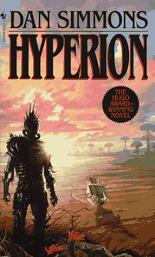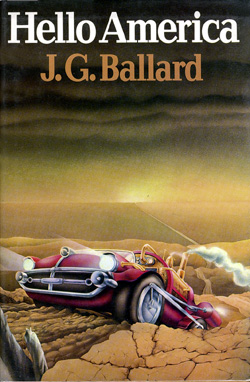
Inherit the Stars
Thomas Waters
188 pages
published in 1977
While idly browsing a certain manga site, I discovered somebody had made a manga out of James Hogan Giants series. That got me interested enough to start reading it, having read the original novels and liking them. As I was reading though it didn’t feel quite right. While it had been a long time since I’ve read them (as I never reviewed any of them on here, it must’ve been twenty-five years ago at least), but it seemed more action orientated and conspiracy minded than I remembered. Which of course led me to reread the original novel that started off the series: Inherit the Stars.
For once the cover on a seventies science fiction novel actually more or less accurately depicts a key scene from the story: the discovery of a dead astronaut clad in a red space suit on the Moon, though in the story he’s found in a cave rather than on the surface. It’s sometime in the twenty-first century and unlike with most Disco Era space exploration novels, we do not have an eternal Cold War going on. The world is a bit utopian even, compared to the actual 21st century so far. The world is rich and at peace, with military budgets slashed as nation states had matured. Profiting from that is the UN Solar System Exploration Program, which explains why there were people on the Moon in the first place able to find that dead astronaut. An astronaut that turns out to be 50,000 years old…
Unravelling the mystery of how there could be an astronaut ont he Moon at a time when the biggest leap in technology was the invention of fire is what drives the story. Key to this unravelling will be Dr Victor Hunt, a British polymath who has been hired by the people who found the astronaut to do just that. He doesn’t do this alone though; entire teams of scientists from multiple disciplines are working on this. Being the nominal protagonist however he will though be the one to find the missing piece of the puzzle. His antagonist is biologist Christian Danchekker. Where Hunt is able to think outside the box and make intuitive leaps, Danchekker is very methodological, plodding, only willing to accept things if they can be proven beyond doubt. You could see Inherit the Stars as an exercise in Hegelian logic: thesis followed by antithesis as Hunt and Danchekker spar, followed by synthesis as their duelling leads them closer to the truth.
To start with, their are two conflicting problems in explaining where “Charlie”, the astronaut corpse, came from. From examining the corpse, Charlie is clearly a modern human, so he has to have come from Earth, because as Danchekker puts, believing convergent evolution could’ve lead to the exact same people arising elsewhere is absurd. Yet clearly he cannot come from Earth as no evidence of a civilisation advanced enough to send people to the Moon existed before the twentieth century.
A new piece of evidence then comes in from further explorations out in the Asteroid Belt, establishing that it’s the remnants of a destroyed planet, one that was destroyed roughly 50,000 years ago… At the same time, further excavations on the Moon find more evidence of the civilisation Charlie was part of, confirming that this civilisation existed on Minerva, as the destroyed planet is christened. This evidence also suggest Minerva was in a state of war at the time of its destruction, between two superpowers armed to the teeth and not afraid to use nukes. Even the Moon was littered with armed camps, Charlie binging a survivor of one.
This of course explains where he came from, but not how he could be the same as a modern human. Convergent evolution is still ruled out even if it would’ve taken place on Minerva. Another mystery is how Charlie could get from Minerva all the way to Earth’s Moon, when his diary, once decoded, reveals it took him only three days. One suggestion is that the Minervians colonised Earth, but the Minervians didn’t seem to have spaceships capable of interplanetary travel and certainly not on such short time scales. Nor is there any evidence found on Earth itself that could be proof of said colonisation, leaving the debate at the same stalemate it was before.
the final clue comes from Ganymede, where an alien space ship is found that’s not 50,000 years old, but twenty-five million years, which was crewed by people that were clearly alien, but which did come from the same planet as Charlie did. At first this only confuses matters further, but when it turns out the ship had a cargo of Earth animals, it suggests that Charlie and the other Minervians were originally from Earth before having been transplanted to their new planet. Remains the question of how Charlie could’ve gotten to the Earth’s Moon from a planet that no longer had the technology to reach it but ah, what if it hadn’t been the Earth‘s moon when he did?
So that’s Inherit the Stars: a scientific puzzle story that slowly and methodologically establishes a ludicrous answer to its stated mystery, but it works. The science behind the fiction even at the time was complete bunkum. There never was a missing fourth planet, it was already known the Moon must’ve been around for billions of years, resulting from the collision of the Earth with another proto planet during the Solar System’s early history and Homo Sapiens definitely evolved on Earth, not elsewhere. But as a story it works. The science being wrong has never stopped science fiction after all.
It’s a pity that this science wasn’t just a neat tool for Hogan; he actually believed in Immanuel Velikovsky‘s theories about how the now existing Solar System was formed in historic times. Worse, he later became a Holocaust denier. None of this is fortunately present in Inherit the Stars and if you like a neat scientific puzzle story with little action but lots of conversations that bother on monologue, it’s still a good read.



